by Naomi L. | January 13, 2016 | Blog, Creative Writing |
Ah, January, the month of new beginnings. I’m all for making New Year’s resolutions, even if most of them never make it past February. One of mine for this year is to read more books, and while it’s too soon to tell what new stories will have everyone hooked in 2016, there are some classics still sitting on my shelf that I’d love to start with.
So in no particular order, here are five books on my to-read list for 2016. Enjoy!
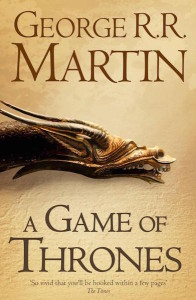 1) A Game of Thrones by George R.R. Martin
1) A Game of Thrones by George R.R. Martin
Late to the party? You bet. I received A Game of Thrones for my birthday in 2014 and started reading it a little over a year ago, but with all the scientific texts constantly taking priority on my list, progress has been slower than I’d like. Still, it’s been a captivating read so far, and I’d love to be able to finish the book this year. Maybe then I’ll finally get into watching the series!
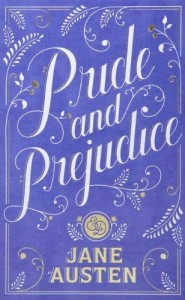 2) Pride and Prejudice by Jane Austen
2) Pride and Prejudice by Jane Austen
This one has been on my to-read list forever, but I can never seem to get around to reading it. Pride and Prejudice is a timeless classic, and while I’ve seen the 2005 film more times than I can count, I imagine Ms. Austen’s literary masterpiece must be even greater in its novel form. If I’m going to read more period dramas in 2016, there’s no better book I’d love to start with!
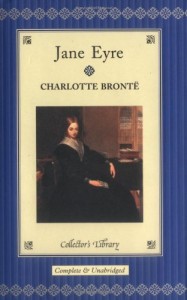 3) Jane Eyre by Charlotte Brontë
3) Jane Eyre by Charlotte Brontë
Speaking of period dramas, this one’s another book given to me as a birthday present and that I’ve been meaning to read for a while. I received Jane Eyre last year after my mother recommended it to me, and since my copy is in a pocket edition, I can at least keep it in my bag and do some light reading while I’m out and about. I’m sure I’ll enjoy this one too; a Victorian feminist coming-of-age story seems right up my alley!
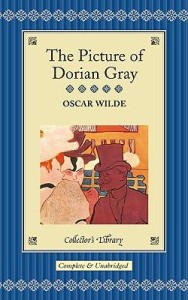 4) The Picture of Dorian Gray by Oscar Wilde
4) The Picture of Dorian Gray by Oscar Wilde
This book I received as a Christmas present a few weeks ago, which turned out to be a pleasant surprise as I have yet to indulge in the works of Oscar Wilde. The Picture of Dorian Gray was also recommended to me by my mom, and though it doesn’t seem like the first book I’d grab off the shelf in the store, the reviews of this Gothic classic have certainly left me intrigued. Knowing it was an incredibly racy work that pushed the boundaries of moral sensibility in its time, I can only imagine what an exciting read lies ahead!
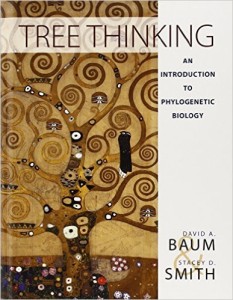 5) Tree Thinking by David A. Baum & Stacey D. Smith
5) Tree Thinking by David A. Baum & Stacey D. Smith
Yes, one of these books is not like the others. Tree Thinking is a nonfiction book that serves as an introduction to phylogenetics, and though I’ve already read part of it just to get my foot in the door of my field of study, it certainly wouldn’t hurt to have as much knowledge of the subject as possible under my belt. It’s proven to be quite a pleasant read so far, which isn’t surprising for me; if I learned anything in my college years, it’s that evolutionary biology is fascinating!
What about you? What books do you plan to read in 2016? Any other resolutions you’ve made for the new year?
by Naomi L. | October 7, 2015 | Blog, Creative Writing, Off The Bookshelf |
I know it’s been a while since I’ve shared a book on my Off The Bookshelf segment, so this week, I’m going to discuss one of my favorites. I’ve talked about this famous story in depth a few times before, notably to discuss five points that are often missed and the reasons why it’s a greater story than many people think. Once again, I’d like to revisit this classic tale of forbidden love, this time in a double dose. I hope you’ll enjoy this review of one of my favorite books off my shelf: Romeo & Juliet/West Side Story.
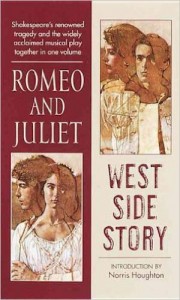
Romeo & Juliet/West Side Story
Summary
First published in 1965, Romeo & Juliet/West Side Story comprises two stories in one: the stage play Romeo & Juliet by William Shakespeare; and the 1957 Broadway musical West Side Story by Arthur Laurents. The book also includes explanatory notes for unfamiliar expressions in Shakespeare’s play and a foreword by renowned theater director Norris Houghton.
Romeo & Juliet tells the story of two teenagers in Renaissance Verona who fall in love despite the age-old feud between their families, but who are driven to an untimely end by fate and the violent circumstances surrounding them. Inspired by Shakespeare’s play, West Side Story tells the same tragic tale of a doomed romance between young lovers, but updates the setting to modern-day New York and the protagonists to a white American boy and a Puerto-Rican girl torn apart by the racism-fueled rivalry between the street gangs with which they’re associated. As much for Romeo and Juliet as for Tony and Maria, love blossoms at first sight and against the odds, only to be threatened and destroyed by hatred that brings tragedy not just to the young lovers, but to their war-torn society as a whole.
Review
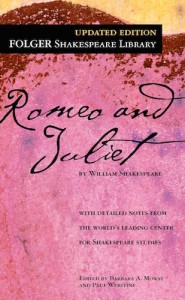 I first read this book as a teenager, shortly after watching the 1961 movie West Side Story as homework for singing lessons (I was to sing “Somewhere” at my first presentation). Long familiar with the plot of the original play, I had fallen in love with the story of forbidden romance and was eager to finally read Shakespeare’s timeless classic for myself. Of course, I’ve made my love for the story itself abundantly clear in the past, so this review will focus a little more on the format of this book than on the pieces within it.
I first read this book as a teenager, shortly after watching the 1961 movie West Side Story as homework for singing lessons (I was to sing “Somewhere” at my first presentation). Long familiar with the plot of the original play, I had fallen in love with the story of forbidden romance and was eager to finally read Shakespeare’s timeless classic for myself. Of course, I’ve made my love for the story itself abundantly clear in the past, so this review will focus a little more on the format of this book than on the pieces within it.
What I find most interesting about this particular book is the way the same story is presented over two very different backdrops: one in Renaissance Italy, the other in 1950s New York. By combining both stories into one volume, Romeo & Juliet/West Side Story offers a unique way to visualize the tale of star-crossed young love across time. The similarities and differences between these popular pieces become clearer as the reader is able to quickly swap a scene in one play for its parallel in the other: the feud between the Montagues and the Capulets becomes a turf war between the Jets and the Sharks, the Capulet ball becomes the dance at the gym, the poetic exchange at Juliet’s balcony becomes a duet on Maria’s fire escape. Each story is beautiful in its own right, but I’ve found that to be able to compare and contrast them so easily makes the fundamental plot all the more fascinating.
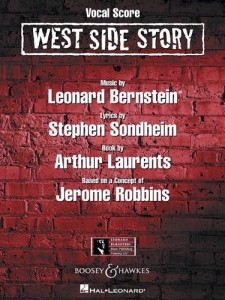 Romeo & Juliet was the first Shakespearean play I ever read, so naturally I was yet unfamiliar with Elizabethan English. This is where the notes in the back of the book came in extremely handy. Essential words and terms are referenced to the line with modern English translations and explanations wherever necessary, so the notes were a tremendous help when it came to deciphering the meanings within Shakespeare’s verse. It’s worth noting that they’re still helpful to any new reader who plans to read more of Shakespeare, as several of the expressions used in Romeo & Juliet commonly appear in his other works. Unfortunately, a similar device isn’t available for West Side Story, which relies on its readers’ familiarity with the music to be fully enjoyable, but this is merely a minor drawback to what is otherwise an equally stunning theatrical masterpiece.
Romeo & Juliet was the first Shakespearean play I ever read, so naturally I was yet unfamiliar with Elizabethan English. This is where the notes in the back of the book came in extremely handy. Essential words and terms are referenced to the line with modern English translations and explanations wherever necessary, so the notes were a tremendous help when it came to deciphering the meanings within Shakespeare’s verse. It’s worth noting that they’re still helpful to any new reader who plans to read more of Shakespeare, as several of the expressions used in Romeo & Juliet commonly appear in his other works. Unfortunately, a similar device isn’t available for West Side Story, which relies on its readers’ familiarity with the music to be fully enjoyable, but this is merely a minor drawback to what is otherwise an equally stunning theatrical masterpiece.
Both Romeo & Juliet and West Side Story have had a profound impact on audiences: one for its poetic deconstruction of romantic ideals, the other for its dramatic commentary on the consequences of social intolerance. The presentation of both plays in one volume brings to light the true timelessness of Shakespeare’s classic, proving that the story of love born against hate will be forever relevant as long as people and society continue to be powerfully motivated by both.
Inspiration
Romeo & Juliet is the archetype of forbidden love thwarted by circumstance, so it’s no wonder the story has translated so well into the modern setting of West Side Story. Whether set between feuding families or warring street gangs, this tragic love story reads not only as the epitome of the passion and dangers of young romance, but as a lesson on how hatred kills. Perhaps for its universal themes of love, intolerance, and the cruelty of fate, the plight of the star-crossed lovers is a tale that has fascinated readers for centuries and certainly will for many more to come. It has served as inspiration for much of my romantic fiction, and to this day I indulge in it whenever I feel the need to satisfy my cravings for drama and romance.
For all the above reasons and more, Romeo & Juliet is and likely always will be my favorite story at its core, regardless of the characters, settings, and details that flesh it out. To be able to enjoy my two favorite versions of the story in a single volume is simply the cherry on top of a classic poetic delight.
by Naomi L. | December 24, 2014 | Blog, Creative Writing |
Merry Christmas Eve! It’s that time of year again, and what better way for writers to celebrate than indulging in some classic Christmas stories? Continuing from my review of Treasury of Christmas Tales, here’s a list of five Christmas-themed stories I enjoyed in my childhood. Enjoy, and have a very Merry Christmas!
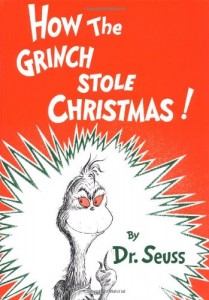 1) How The Grinch Stole Christmas! by Dr. Seuss
1) How The Grinch Stole Christmas! by Dr. Seuss
How The Grinch Stole Christmas! is by far one of my all-time favorite Christmas books, which I’ve already made clear in the review I wrote of it last year. Dr. Seuss’s classic tale of the grumpy Grinch’s quest to ruin Christmas for the happy Whos and his discovery of the true Christmas spirit never fails to warm my heart whenever I read it. We even had the TV special on VHS to watch whenever we felt like indulging in some holiday entertainment with Seuss’s beloved characters. The Grinch is a fun story for children and adults alike, and we love it to this day!
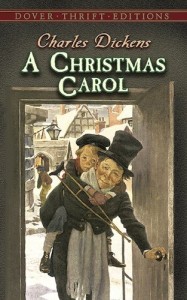 2) A Christmas Carol by Charles Dickens
2) A Christmas Carol by Charles Dickens
Who doesn’t think of A Christmas Carol when remembering favorite Christmas tales? Reprinted and adapted multiple times since its first publication in 1843, Charles Dickens’ tale of holiday-hating miser Ebenezer Scrooge and his change of heart after an encounter with the Ghosts of Christmas may be one of the most famous and influential Christmas books ever written. I had read and watched quite a few adaptations for children when I was a kid, so to this day I remember it as a Christmas favorite!
3) The Nutcracker by E. T. A. Hoffman
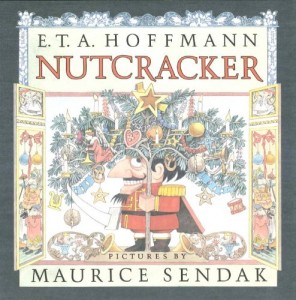 Officially titled The Nutcracker and the Mouse King, the German fairy tale of the toy prince and the little girl who loved him is one that I remember fondly from my childhood, as my mom would read it to us when we were little. Aside from an adapted children’s book, we also had a couple of Nutcracker figures that we’d put out every December with the rest of our Christmas decorations (coincidentally, one of them eventually got a broken jaw, just like the Nutcracker in the story). Though there may not be much to tie this story to the season other than the fact that it takes place around Christmas, I still like to keep The Nutcracker on my list of holiday classics!
Officially titled The Nutcracker and the Mouse King, the German fairy tale of the toy prince and the little girl who loved him is one that I remember fondly from my childhood, as my mom would read it to us when we were little. Aside from an adapted children’s book, we also had a couple of Nutcracker figures that we’d put out every December with the rest of our Christmas decorations (coincidentally, one of them eventually got a broken jaw, just like the Nutcracker in the story). Though there may not be much to tie this story to the season other than the fact that it takes place around Christmas, I still like to keep The Nutcracker on my list of holiday classics!
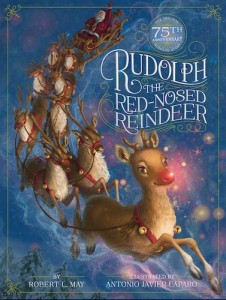 4) Rudolph the Red-Nosed Reindeer by Robert Lewis May
4) Rudolph the Red-Nosed Reindeer by Robert Lewis May
Why not add a little music to the list? Since its first publication in 1939, Rudolph the Red-Nosed Reindeer has been a common favorite Christmas story among children, and an even more popular song. I have fond memories of singing the background chant version with my sisters (“Like a lightbulb!”), sometimes for the whole family to watch during our annual Christmas presentations. Maybe this tale spoke to me for its message about being loved for what makes you special, or maybe the song was just that catchy, but either way, Rudolph has always been a holiday favorite of mine!
5) The Nativity of Jesus (a.k.a. “The Original Christmas Story”)
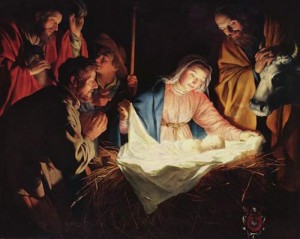
“Adoration of the Shepherds” (Gerard van Honthorst, 1622)
With all the consumerism and stress surrounding the holidays, it’s easy to forget why Christmas is celebrated in the first place. That’s why the birth of Jesus is always on my list of favorite Christmas stories: without it, none of the others would exist! Chronological inaccuracies aside, I’ve always considered the account of Christ’s birth to be an uplifting tale that’s worth remembering every time Christmas comes around. I love spiritual and holiday stories alike, so the nativity of Jesus may very well be my favorite Christmas story of all!
What about you? What are your favorite Christmas stories? Any classics you remember fondly from your childhood?
by Naomi L. | December 17, 2014 | Blog, Creative Writing, Off The Bookshelf |
Remember when you were a kid, how you enjoyed reading or listening to holiday stories with your family at the end of the year? That was a good part of my childhood, as we had several Christmas-themed books sitting on our shelves when I was growing up. So to celebrate the season, here’s a brief review of a Christmas book we had when I was a kid: Treasury of Christmas Tales. Enjoy!
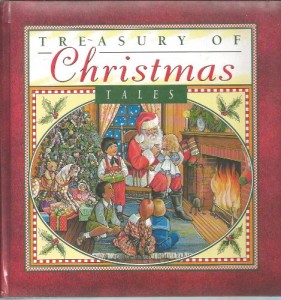
Treasury of Christmas Tales, by Carolyn Quattrocki
Summary
Treasury of Christmas Tales is a children’s book published around 1994 and consisting of a collection of classic Christmas stories. The book was put together by author Carolyn Quattrocki, and includes colorful illustrations by Susan Spellman and adaptions of works by writers such as Charles Dickens (“A Christmas Carol”), Clement C. Moore (“‘Twas The Night Before Christmas”), the Brothers Grimm (“The Elves and the Shoemaker”) and Hans Christian Andersen (“The Little Match Girl”). Written in simple text, Treasury of Christmas Tales contains 19 stories, all themed around Christmas and the winter holiday season:
- A Christmas Carol
- The Wishing Star
- The Little Match Girl
- The Christmas Mouse
- Jingle Bells
- The Magic Toy Shop
- The Littlest Angel
- The Twelve Days of Christmas
- The Christmas Bear
- ‘Twas the Night Before Christmas
- The Nutcracker
- Santa Claus is Coming to Town
- The Tiny Elf
- O Christmas Tree
- The Elves and the Shoemaker
- The Little Drummer Boy
- Christmas Carols
- The Happy Snowman
- Rudolph’s Adventure
Review
I remember I enjoyed reading this book with my mother and sisters when I was a child. Around the end of the year, my mom would read some of these tales to us while we followed along with the pictures, which really made for a fun family experience.
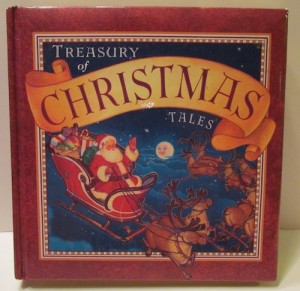
The 1994 edition of Treasury of Christmas Tales from my childhood
What I especially enjoyed about this book was how accessible the text was for us at our young age. Originally complex tales like “A Christmas Carol” were adapted into language that we as children could easily understand, but that didn’t lose the Christmas spirit of the story. Even sad tales like “The Little Match Girl” were told in a way that was uplifting and heartwarming. I also liked the colorful illustrations on every other page of the book, which made the stories even more comprehensible and memorable. It isn’t a broad collection for sure, but it does have good stories and illustrations that made it a joy for us to read every holiday season.
Inspiration
Though I hadn’t read this book since I was a kid, recently rediscovering it among my childhood belongings brought back pleasant memories of enjoying the holiday season with my family. It’s always fun to revisit stories from a happy time in your life, and the tales I enjoyed as a kid usually have a way of inspiring me to create stories of my own as an adult. So if you have some good holiday stories from your childhood, I encourage you to read them again this season. You may find just what you need to write your own cheerful Christmas tale!
by Naomi L. | May 7, 2014 | Blog, Creative Writing, Writer's Toolkit |
So I figured it was time for another Writer’s Toolkit post, as it’s been a while since I’ve shared one. While trying to decide which tool to write about next, I realized I haven’t yet mentioned an essential one that’s been especially useful in my experience as a writer. So to name another indispensable item for the serious artist, here’s a brief review of one of my personal favorites: the pocket notebook.
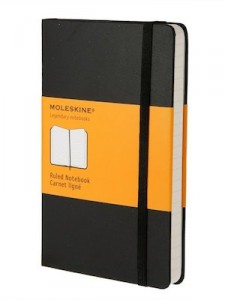
Moleskine Classic Pocket Notebook
The pocket notebook I use was a Christmas present from my cousin, one of several people in my family who know of my passion for creative writing. She told me it was for carrying around in my pocket or backpack so I could jot down ideas as they came to me. So that’s what I did, and ever since, it’s been a handy tool for taking notes while on the go. I use it to keep track of random thoughts, lists of blog post ideas, possible story titles, etc. It’s always great to have with me whenever I go out!
One of my favorite places to take my notebook is the airport. While sitting in the café waiting for arrivals, I like to observe people around me and try to imagine what their stories might be, and these thoughts sometimes become notes that I could use later on. Another fun use for my notebook is keeping track of the observations I make about nature when I sit outside, as these often become inspiration for poetry. Being naturally forgetful, keeping a written record of my observations has been immensely helpful for my fictional works.
Much like the journal I’ve written about before, my notebook serves a useful purpose as a collection of the scraps of ideas that come out of my head. This gives me a clear vision of my thought processes, especially the more random and incomplete ones that don’t appear in my journal. This also makes my notebook a great source of inspiration whenever I hit a creative block. Sometimes notes that seemed like simple observations at the time of writing turn out to be good ideas for fiction. So don’t neglect to record your thoughts while you’re out and about. You may discover something in your notes later on that you never even realized was there!
Summary
Advantages of Carrying a Pocket Notebook
- Always be prepared when new ideas strike
- Write down observations as they happen
- Keep scraps in one collection
- Maintain source of possible inspiration for future writing
A pocket notebook is a great tool for any writer, especially fiction writers who are constantly seeking new ideas for stories. If you find that inspiration often strikes at unpredictable and even inconvenient moments, you should definitely consider keeping a small notebook with you at all times. The writer in your mind will thank you!
 1) A Game of Thrones by George R.R. Martin
1) A Game of Thrones by George R.R. Martin 2) Pride and Prejudice by Jane Austen
2) Pride and Prejudice by Jane Austen 3) Jane Eyre by Charlotte Brontë
3) Jane Eyre by Charlotte Brontë 4) The Picture of Dorian Gray by Oscar Wilde
4) The Picture of Dorian Gray by Oscar Wilde 5) Tree Thinking by David A. Baum & Stacey D. Smith
5) Tree Thinking by David A. Baum & Stacey D. Smith












Recent Comments